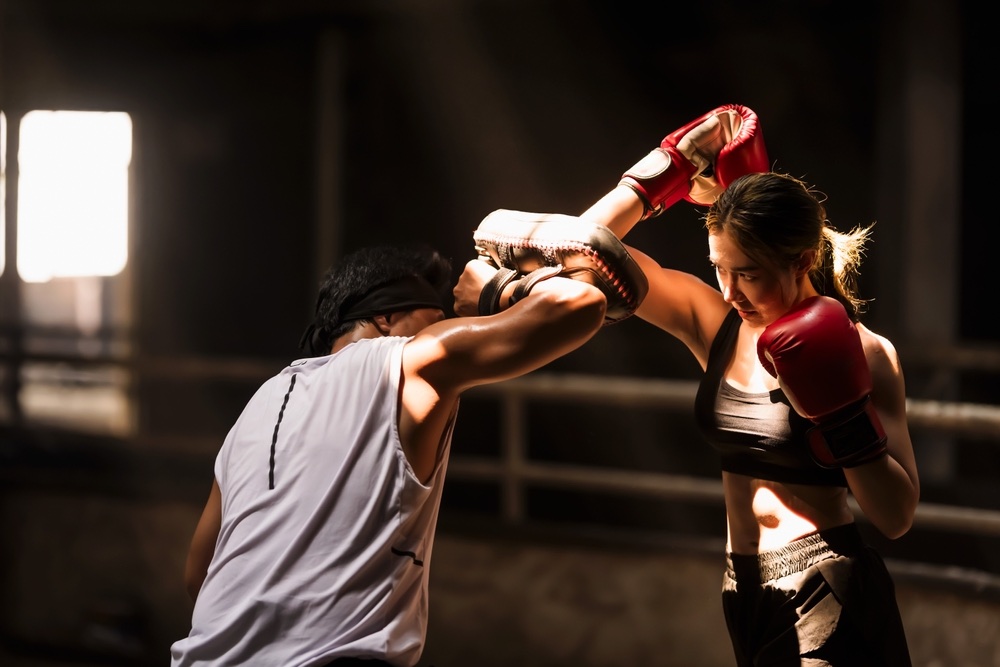
Kickboxing and Muay Thai are both popular martial arts known for their powerful striking techniques, but they have distinct characteristics that set them apart. Kickboxing is a versatile combat sport that blends traditional boxing with kicking techniques from various martial arts, while Muay Thai utilizes punches, kicks, elbows, and knees. Although they share similarities, their differences lie in the range of strikes, rules, and overall approach to fighting. Understanding these distinctions is key to appreciating the unique qualities of each discipline.
Getting to Know Kickboxing
Kickboxing is a dynamic martial art that combines elements of traditional boxing with powerful kicking techniques from martial arts such as Muay Thai and Karate. Known for its high-intensity workouts, kickboxing emphasizes both striking and defensive skills, making it an engaging and versatile activity. People practice kickboxing for various reasons, including fitness, self-defense, and competitive sports, making it accessible to individuals of all skill levels.
As its name suggests, kickboxing is a striking style that incorporates punches and kicks. However, it is an umbrella term encompassing many combat and martial arts styles. The essence of kickboxing lies in its stand-up fighting approach, meaning it focuses on striking rather than ground fighting. The techniques employed vary depending on the specific style of kickboxing. While standard punching techniques similar to those in Western boxing are common, kickboxing also typically includes kicks and knee strikes. Some styles even involve elbow strikes and limited grappling or clinching.
In modern kickboxing sports, as seen in popular organizations like K-1, Glory, or One Championship, the rules allow for punches, kicks, and limited grappling or clinching. These sports adopt a similar set of regulations, ensuring that the art of kickboxing remains true to its roots while also evolving into a competitive discipline that continues to attract practitioners and fans worldwide.
The Differences Between Muay Thai and Kickboxing

Muay Thai and kickboxing are both striking-based martial arts that focus on powerful techniques and athleticism, but they have distinct origins and characteristics. Here are some key differences between these two popular sports.
Techniques and Striking : One of the main differences between Muay Thai and kickboxing lies in their striking techniques. Muay Thai is known for its “eight limbs” approach, utilizing punches, kicks, elbows, and knees. This allows practitioners to strike from various angles and in close-range combat. Kickboxing primarily focuses on punches and kicks, often with a more upright stance and fewer knee strikes compared to Muay Thai.
Stance and Movement : Muay Thai practitioners adopt a more square stance, which provides a solid base for powerful strikes and defensive maneuvers. This stance allows for the effective use of elbow and knee strikes in close combat. Kickboxing, in contrast, often features a more sideways stance, which enhances mobility and allows for quick, explosive strikes. This stance is particularly effective for delivering fast combinations and evading attacks.
Clinching : Muay Thai fighters are accustomed to clinching and neck grabbing, techniques that are common in Muay Thai but against the rules in kickboxing. In kickboxing, the correct approach is to grab, attack, and then push away immediately, avoiding any form of clinching.
Scoring System : In kickboxing, judges score based on the accuracy of strikes that hit the target. The power of the strikes is not essential; as long as a strike lands, it counts as a point. This is a key difference from Muay Thai, where victory is determined by the number of strikes and their power, the fighter’s form, and overall strength.
Cultural Significance : Muay Thai carries significant cultural and historical importance in Thailand, often featuring traditional rituals and ceremonies. It is deeply rooted in Thai history and folklore. Kickboxing, while respected as a sport in its own right, is often practiced more for fitness and competitive purposes.
These differences in techniques, stances, clinching, scoring, and cultural significance highlight the unique aspects of each martial art.
The Benefits of Kickboxing
Kickboxing is not just an intense and exhilarating workout; it also offers numerous benefits for both physical and mental health. Here are some key advantages of incorporating kickboxing into your fitness routine.
Burning Fat and Boosting Energy : Kickboxing combines high-energy cardio with martial arts techniques, making it an excellent workout for burning calories and shedding body fat. This full-body workout demands constant movement, which increases your heart rate and energy expenditure. According to studies, kickboxers tend to have more muscle mass and lower body fat percentages. The American Council on Exercise found that kickboxing can burn more than eight calories per minute, meaning an hour-long class can torch around 480 calories.
Relieving Stress : Few activities are as effective at reducing stress as kickboxing. The physical effort of kicking and punching a bag requires dedication and concentration, helping to clear your mind and release built-up tension. Research shows that boxing-style workouts can significantly reduce anxiety, depression, and anger. Participants in studies have reported improvements in mood, tranquility, energy, and relaxation, while experiencing less tension, anxiety, and confusion.
Increasing Strength and Agility : Kickboxing is a full-body workout that builds strength and enhances agility. It combines elements of weight training, combat techniques, and cardiovascular exercise to develop a more robust and resilient physique. Regular practice boosts core strength and improves reflexes, improving overall coordination. The diverse movements in kickboxing engage multiple muscle groups simultaneously, allowing you to master new sequences more quickly and improve your agility over time.
Developing Self-Defense Skills : Many kickboxing techniques are practical for self-defense situations. Instructors often highlight how specific moves can be applied outside the classroom for personal protection. Paying attention to these lessons can equip you with valuable skills that might be useful in real-life scenarios.
Achieving Weight Loss : Kickboxing is highly effective for weight loss because it engages multiple muscle groups through kicks, jumps, and punches. These movements require significant strength and core power, making them excellent for toning your body and trimming your waistline. Regular kickboxing sessions provide an intense aerobic workout that burns a substantial number of calories, aiding in weight management.

In summary, while kickboxing and Muay Thai share a foundation in striking techniques, they differ significantly in their approaches, rules, and cultural significance. Kickboxing, focusing on punches and kicks, offers a versatile and accessible workout, while Muay Thai’s “eight limbs” approach emphasizes a broader range of strikes and a deeper connection to tradition. Understanding these differences enhances your appreciation of each martial art and helps you choose the discipline that best suits your goals.



